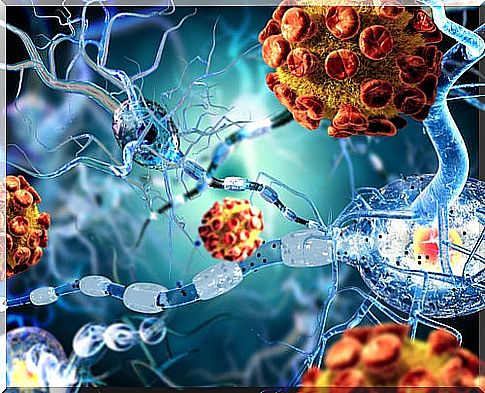What Is West Nile Virus?
West Nile virus (WNS) mainly affects equines and humans, causing West Nile fever in the latter.
West Nile virus
The West Nile virus, West Nile virus or WNS is a virus of the flavivirus genus, in which the yellow fever or denge virus, among others, are also found.
Like the latter two, WNS is transmitted by mosquitoes that bite a sick animal, carry the virus in their salivary glands and, by biting another animal, including man, infect it with the virus.
WNS causes the so-called West Nile fever, which causes encephalitis. The virus was first described in Africa and made its way to the Western Hemisphere in 1999, reaching the United States, probably through infected birds.
Disease transmission
Birds are the main reservoir of the virus, with species more sensitive than others, such as crows. Birds maintain the viral transmission cycle, especially in humid areas, where mosquito larvae accumulate.
When a mosquito bites an infected bird, it ingests the virus through blood. So, the virus behaves as a vector that transmits the disease.
In addition to transmitting the virus through their bites, female mosquitoes can transmit the virus to their offspring, so that mosquito eggs carrying the WNS can persist for a long time and hatch when conditions are most favorable (usually in times of rains) thus spreading the infection.
There are other means by which the WNS can be spread person-to-person. For example, through blood transfusions of infected blood or organ transplants from donors carrying the virus. Lastly, there is a risk that infected women will transmit the virus to their babies during pregnancy or while breastfeeding.
Symptoms of West Nile fever
This zoonosis (animal disease that can be transmitted and affect man) can present variable symptoms from one person to another. In most cases, affected people do not show symptoms.
In 20% of cases, the disease manifests itself with flu-like symptoms, appearing:
- Tiredness.
- Weakness.
- Lack of appetite.
- Fever and headache
- Abdominal and muscle pain
- Erythema (redness of the skin).
- Swollen lymph nodes.
However, in a low percentage of cases, the virus is capable of reaching the central nervous system (CNS) producing a serious clinical picture that can even cause the death of the person or animal.
When the virus enters the CNS, it begins to multiply and destroy the neurons it infects. With which, it causes an inflammation in the brain tissue. And this can lead to encephalitis (inflammation of the brain) or meningitis (inflammation of the brain membranes).

These serious pathologies need immediate medical attention and can be detected by the presence of any of the following symptoms:
- Eat.
- Paralysis.
- Seizures
- Neck stiffness.
- Muscular weakness.
- Loss of consciousness
- Confusion and disorientation.
The development of one clinical form or another depends mainly on the state of health of the affected person. There are risk groups, in which are the elderly, babies or immunosuppressed people, for example.
Treatment of WNS
Currently there is no treatment for West Nile virus (WNS), most affected people suffer from the mild form of the disease, which is treated similarly to a cold. In the most severe cases, treatment consists of supportive measures to try to control and reverse damage to the nervous system.
Recently, a vaccine for horses has been developed, with the virus attenuated, although its efficacy is controversial. Today there is no vaccine for humans.
The only way to reduce the frequency of infection in humans is through awareness of risk factors and prevention education. Basically, there are three important points to keep in mind:
- Reduce the risk of transmission by mosquitoes.
- Reduce the risk of transmission from animals to humans.
- Reduce the risk of transmission by blood transfusion or organ transplantation.
WNS prevention
Since there is no treatment for the disease and it is an emerging epidemic, in many countries, certain containment measures have been implemented .
The main measure carried out by health authorities is to control the mosquito population and eliminate infected mosquito larvae. In addition, a strict control of sick animals must be established, which can act as biological alarms by denoting the presence of the disease.
In addition, health personnel who care for patients infected with this virus must follow the corresponding infection control precautions. The same occurs with the personnel who handle the samples obtained from these patients.








